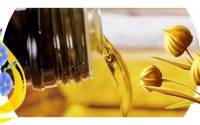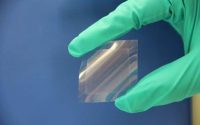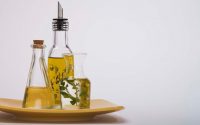The History of Soap
In ancient times, no matter the east or the west, the earliest washing ingredients were nothing but sodium carbonate and potassium carbonate. The former is a natural lake mineral product, and the latter is the main washing component of grass ash.
The invention of soap was rumored to be a Phoenician on the eastern coast of the Mediterranean. Legend has it that a Phoenician chef in the ancient Egyptian palace in the 7th century BC may have been the inventor of soap. The chef did not intend to overturn a can of cooking oil. To avoid being discovered by others, he covered it with the ash from the stove and took the oily ash to the outside and threw it away. In order to wash his dirty hands, he put his hands in the water. It was found that only a few squats were used, and the greasy hands were washed away, and even the old dirt was washed away. The chef then asked other chefs to wash their hands with this substance and found that they washed their hands more cleanly. Later, the Pharaoh knew the secret and asked the chef to make some oily ash for him to wash his hands.
However, according to archaeological findings so far, soap-like items date back to Babylon in the 29th century BC. In the 23rd century BC, a soap formula consisting of water, alkali and cinnamon oil was recorded on the mud board of Babylon. Edwin Smith’s papers show that the ancient Egyptians used a combination of animal, vegetable oil and alkaline salts to create soaps for regular bathing in the 15th century BC. Although soap was invented very early, block soap was a luxury that was not widely used by the general public until the 19th century.
Ancient China
Before the invention of soap, people in northern China used pig’s pancreas, oil and alkali to lick them and put them to dry for a few days, called “pancreas.” There are also people who use water to soak the wood ash. After filtering, use this substance to wash clothes. Plant extracts containing saponins such as saponins and the like are also used in addition to those. In addition, people in ancient times scrubbed the skin with water and wood chips, and then applied oil to moisturize the rubbed skin, which is the ingredient they used to bathe.
Japan
Japanese fertilization photography “soap” (soap), Yayaki “stone 碱”.
The Middle East
The 12th century Islamic document describes the process of making soap. The key raw materials, alkali, are mentioned in the document. In the 13th century, soap production in the Islamic world almost entered the period of industrialization. The raw materials are supplied by Nablus, Fes, Damascus, Aleppo and the like.
Western countries
In the second century, a Westerner named Gaylina, who opened a soap factory in Italy and France, was not very developed at the time, so the soap cleaning items at the time were not very effective. Charlemagne came to Rome to learn about the benefits of soap and returned to Frank to promote; before that, the West was limited to the Sicilian region. In 1662, the British chemist Zhong En and Bammer improved the original Gailan soap. The effect of cleaning items is also better. The French chemist Schiffer also extended the deep improvement of Zhong En and Bammer’s modified soap to become the first person to make soap with the principle of tallow alkalining, and is also an important step in the manufacture of modern soap.
More than 4,000 years ago, in a small island called Lesbos in ancient Greece, local people used animals to worship the sky. Because wood was used when burning animals, the wood ash and animal fats mixed to produce a similar Soapy things, heavy rain washed these things into the rivers used by local women to wash clothes, and they found that the clothes were washed more cleanly.
3000 years ago, Mesopotamians (two river cultures) found that after the burning of the ash and oil after the plants were burned, the dirt could be removed. From the soap factory excavated from the ruins of Pompeii, Italy, you can know that ancient Rome has started using soap. Brulan is the first person to invent the production of sodium carbonate soap from salt, and is also an important person in the history of soap.
It is worth mentioning that in the United States during the pioneering period, immigrants will choose a day to gather soap from the village when they are warm in the early spring.
The source of soap is derived from oak, beech and other wood extracts, used as a source of alkali juice, if not enough, it is added from the ash of the stove. With alkali juice, oil is obtained from animal fats or vegetable oils for cooking, but once the oil and water are separated, it has to be repeated. In the 19th century, companies invested in soap production.
In ancient times, no matter the east or the west, the earliest washing ingredients were nothing but sodium carbonate and potassium carbonate. The former is a natural lake mineral product, and the latter is the main washing component of grass ash.
The invention of soap was rumored to be a Phoenician on the eastern coast of the Mediterranean. Legend has it that a Phoenician chef in the ancient Egyptian palace in the 7th century BC may have been the inventor of soap. The chef did not intend to overturn a can of cooking oil. To avoid being discovered by others, he covered it with the ash from the stove and took the oily ash to the outside and threw it away. In order to wash his dirty hands, he put his hands in the water. It was found that only a few squats were used, and the greasy hands were washed away, and even the old dirt was washed away. The chef then asked other chefs to wash their hands with this substance and found that they washed their hands more cleanly. Later, the Pharaoh knew the secret and asked the chef to make some oily ash for him to wash his hands.
However, according to archaeological findings so far, soap-like items date back to Babylon in the 29th century BC. In the 23rd century BC, a soap formula consisting of water, alkali and cinnamon oil was recorded on the mud board of Babylon. Edwin Smith’s papers show that the ancient Egyptians used a combination of animal, vegetable oil and alkaline salts to create soaps for regular bathing in the 15th century BC. Although soap was invented very early, block soap was a luxury that was not widely used by the general public until the 19th century.
Ancient China
Before the invention of soap, people in northern China used pig’s pancreas, oil and alkali to lick them and put them to dry for a few days, called “pancreas.” There are also people who use water to soak the wood ash. After filtering, use this substance to wash clothes. Plant extracts containing saponins such as saponins and the like are also used in addition to those. In addition, people in ancient times scrubbed the skin with water and wood chips, and then applied oil to moisturize the rubbed skin, which is the ingredient they used to bathe.
Japan
Japanese fertilization photography “soap” (soap), Yayaki “stone 碱”.
The Middle East
The 12th century Islamic document describes the process of making soap. The key raw materials, alkali, are mentioned in the document. In the 13th century, soap production in the Islamic world almost entered the period of industrialization. The raw materials are supplied by Nablus, Fes, Damascus, Aleppo and the like.
Western countries
In the second century, a Westerner named Gaylina, who opened a soap factory in Italy and France, was not very developed at the time, so the soap cleaning items at the time were not very effective. Charlemagne came to Rome to learn about the benefits of soap and returned to Frank to promote; before that, the West was limited to the Sicilian region. In 1662, the British chemist Zhong En and Bammer improved the original Gailan soap. The effect of cleaning items is also better. The French chemist Schiffer also extended the deep improvement of Zhong En and Bammer’s modified soap to become the first person to make soap with the principle of tallow alkalining, and is also an important step in the manufacture of modern soap.
More than 4,000 years ago, in a small island called Lesbos in ancient Greece, local people used animals to worship the sky. Because wood was used when burning animals, the wood ash and animal fats mixed to produce a similar Soapy things, heavy rain washed these things into the rivers used by local women to wash clothes, and they found that the clothes were washed more cleanly.
3000 years ago, Mesopotamians (two river cultures) found that after the burning of the ash and oil after the plants were burned, the dirt could be removed. From the soap factory excavated from the ruins of Pompeii, Italy, you can know that ancient Rome has started using soap. Brulan is the first person to invent the production of sodium carbonate soap from salt, and is also an important person in the history of soap.
It is worth mentioning that in the United States during the pioneering period, immigrants will choose a day to gather soap from the village when they are warm in the early spring.
The source of soap is derived from oak, beech and other wood extracts, used as a source of alkali juice, if not enough, it is added from the ash of the stove. With alkali juice, oil is obtained from animal fats or vegetable oils for cooking, but once the oil and water are separated, it has to be repeated. In the 19th century, companies invested in soap production.



